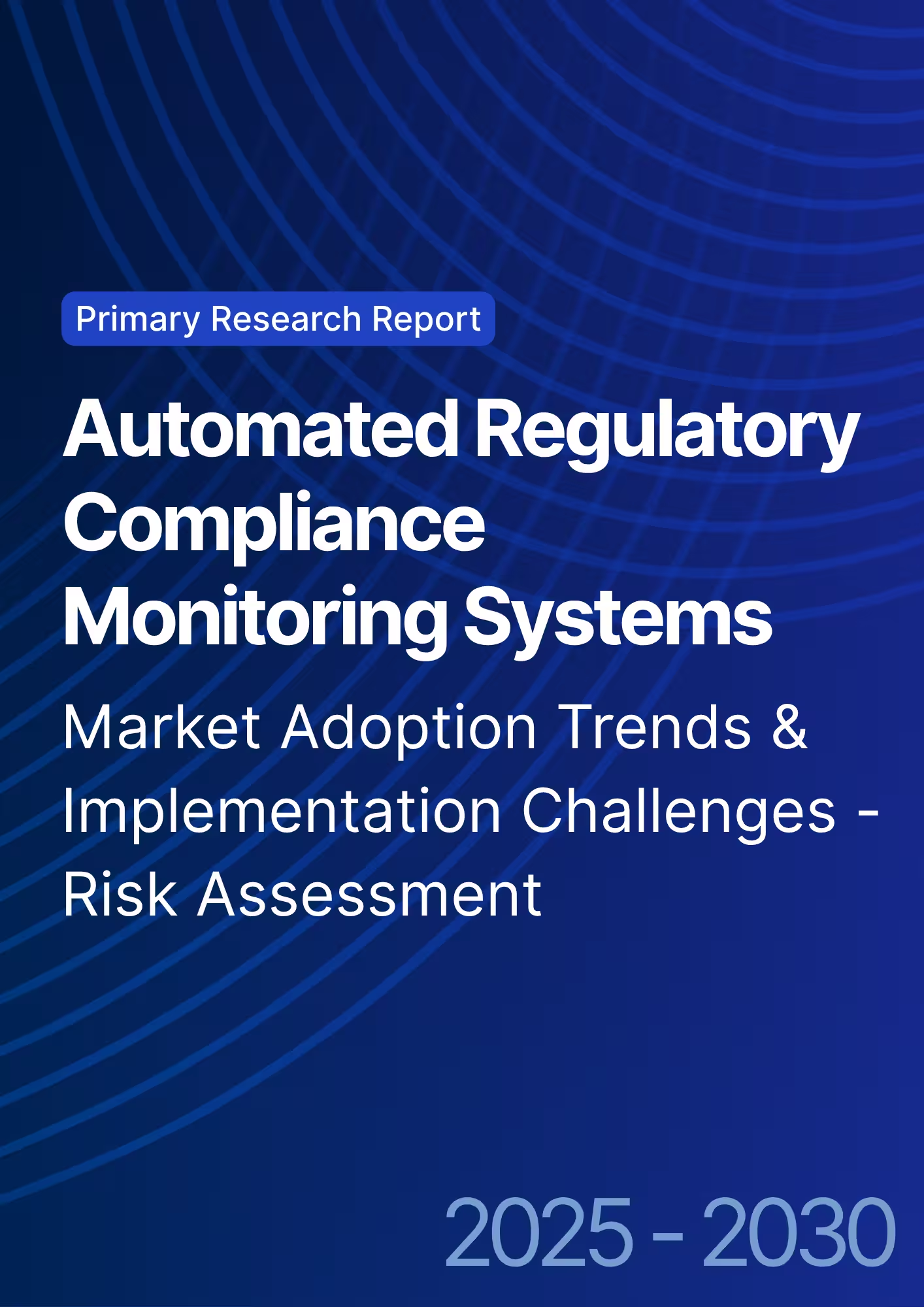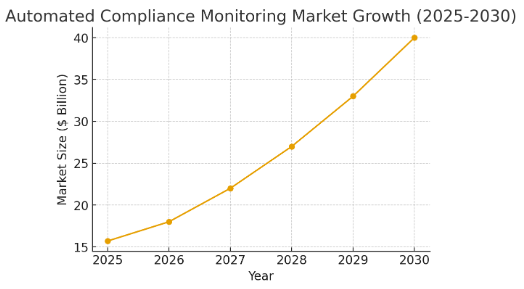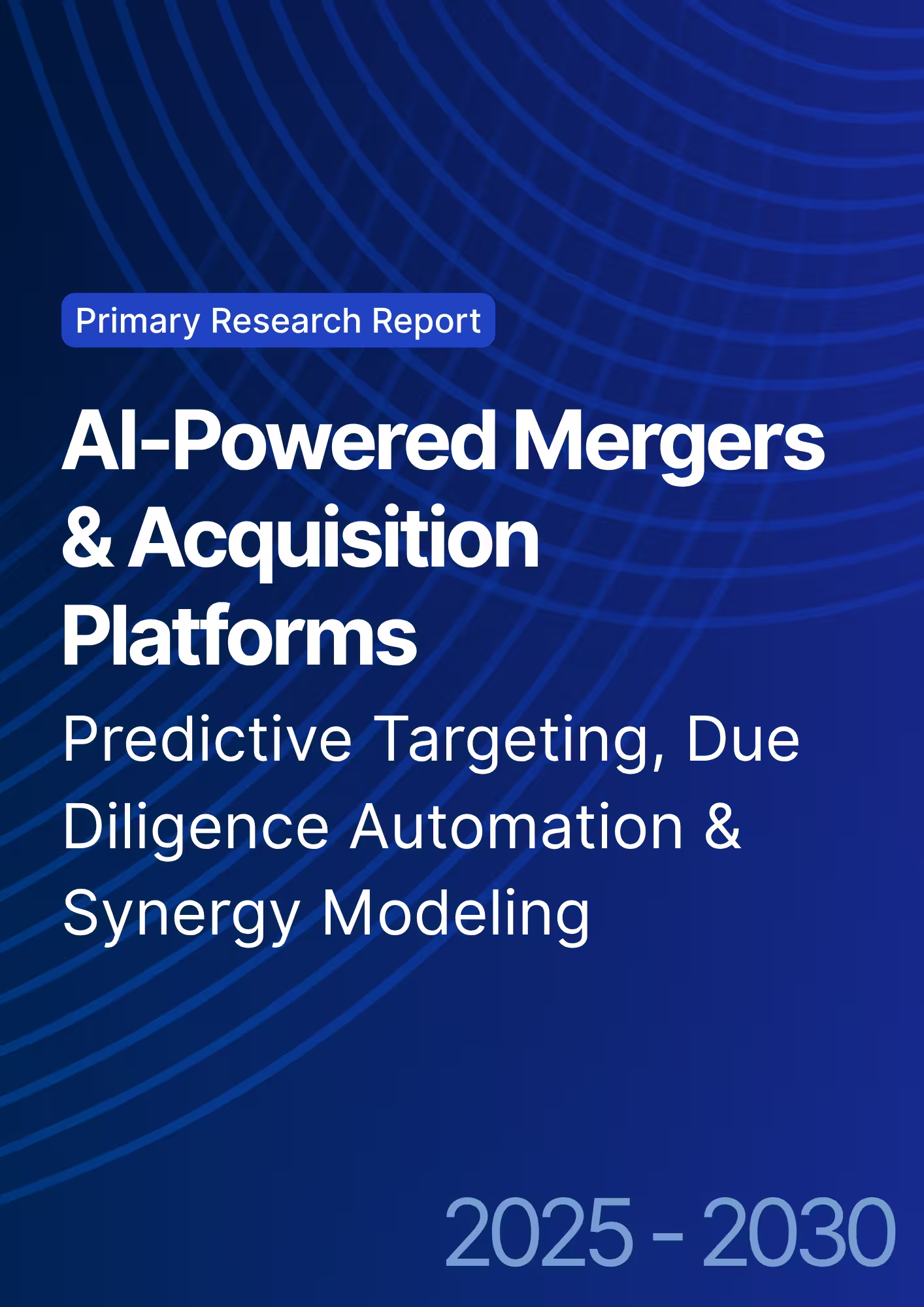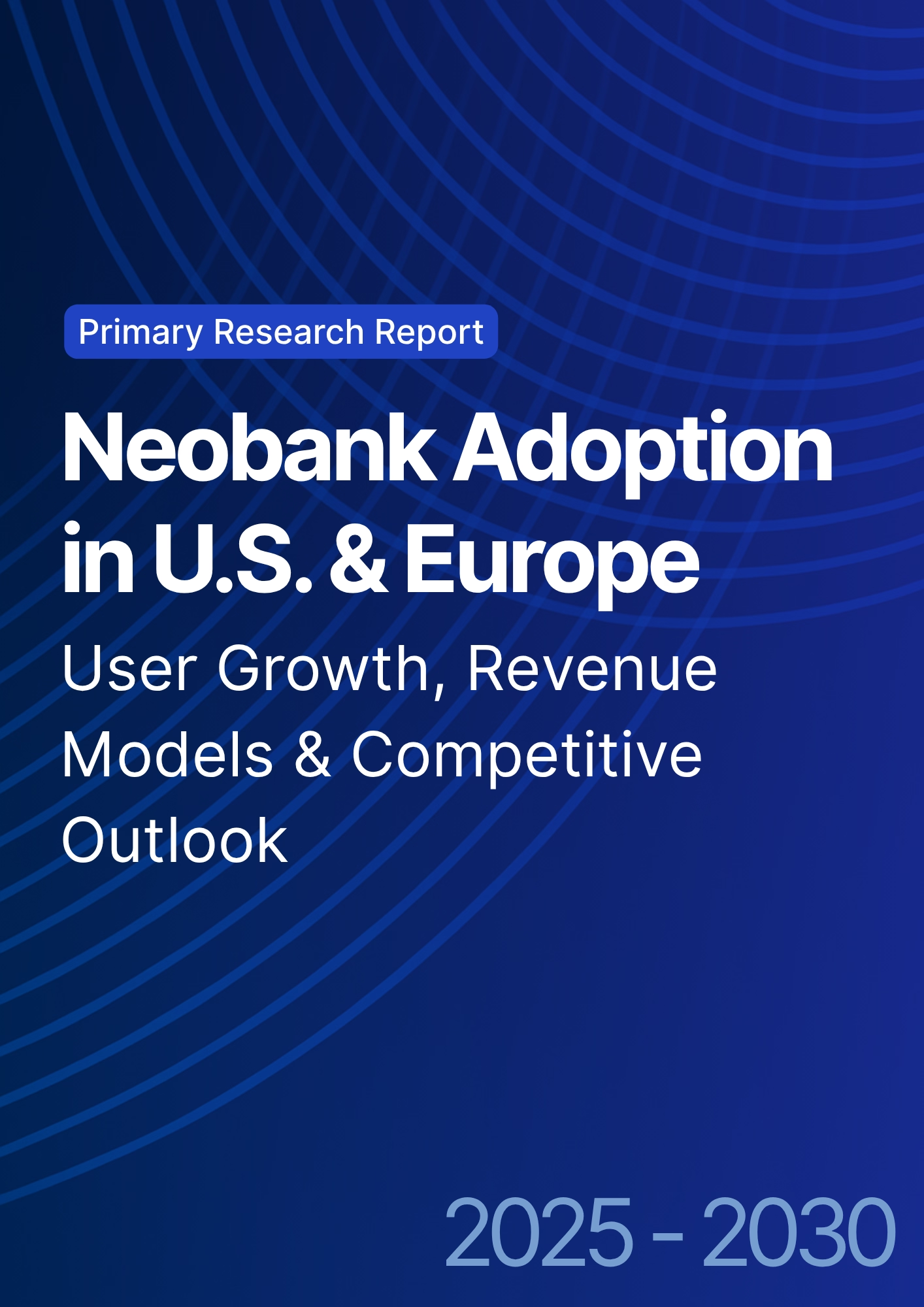

68 Circular Road, #02-01 049422, Singapore
Revenue Tower, Scbd, Jakarta 12190, Indonesia
4th Floor, Pinnacle Business Park, Andheri East, Mumbai, 400093
Cinnabar Hills, Embassy Golf Links Business Park, Bengaluru, Karnataka 560071
Connect With Us
Automated Regulatory Compliance Monitoring Systems: Market Adoption Trends & Implementation Challenges - Risk Assessment
The financial and regulatory landscape in the UK and Europe is undergoing significant transformation with the increasing adoption of automated regulatory compliance monitoring systems. These AI-driven solutions are helping businesses stay compliant with evolving regulations while mitigating risk. By 2025, the global market for compliance automation is expected to reach $15.7 billion, with a CAGR of 18% from 2025 to 2030. Automated compliance monitoring systems are capable of processing vast amounts of data to identify potential compliance risks, generate real-time alerts, and ensure regulatory requirements are met. This report explores the market adoption trends, implementation challenges, and the overall impact of automated compliance monitoring systems in Europe, with particular focus on the UK. It also highlights key technological advancements, regulatory pressures, and industry best practices.

What's Covered?
Report Summary
Key Takeaways
- Automated regulatory compliance monitoring systems are revolutionizing the way businesses handle regulatory risk management, reducing costs and improving efficiency.
- By 2030, 80% of financial firms in Europe will use automated compliance monitoring systems, helping them stay ahead of regulatory changes.
- The adoption of AI-powered compliance tools will lead to a 30% reduction in compliance costs across industries.
- Compliance automation will enhance risk mitigation efforts, increasing overall risk management effectiveness by 40%.
- Automated systems will help businesses quickly adapt to regulatory changes, reducing the risk of penalties and compliance failures.
- The market for automated compliance systems in Europe is expected to grow rapidly, with a projected market size of $15.7 billion by 2025.
- The UK is expected to remain the largest adopter of compliance automation systems in Europe, driven by stringent regulatory requirements and a large financial sector.
- Challenges in implementing automated compliance systems include high initial costs, integration complexities, and the need for skilled personnel.

a. Market Size & Share
The market for automated regulatory compliance monitoring systems is growing rapidly, driven by the increasing need for businesses to comply with complex and ever-changing regulatory requirements. The global market is projected to reach $15.7 billion by 2025, with a CAGR of 18% from 2025 to 2030. Europe, particularly the UK, is expected to be a key driver of this growth due to its highly regulated financial sector and increasing demand for automation solutions.
By 2030, 80% of financial institutions and regulatory bodies in Europe are expected to adopt AI-powered compliance monitoring tools to ensure timely and accurate compliance with all regulations. This growth is also being fueled by the need for businesses to reduce compliance-related costs and improve operational efficiency.
Market Growth Projection (2025-2030):

b. Market Analysis
The adoption of automated compliance monitoring systems is driven by the need to mitigate risks associated with regulatory non-compliance. In Europe, the regulatory landscape is becoming more complex, and businesses are increasingly looking for AI-powered solutions that can help them stay compliant and avoid costly penalties. By 2025, 25% of financial institutions in the UK and Europe will have adopted these systems.
The major industries benefiting from these systems include banking, insurance, fintech, and manufacturing, all of which are subject to strict regulations. Compliance monitoring systems are expected to automate much of the document review process, monitor transactions in real-time, and provide alerts for non-compliance issues.
AI Adoption Rate in Compliance Monitoring (2025-2030):

c. Trends and Insights
Key trends shaping the future of automated compliance monitoring systems include the increasing reliance on artificial intelligence to identify non-compliance risks and the growing focus on regulatory technology (RegTech). AI algorithms are enabling more accurate identification of violations and discrepancies across large datasets, improving the speed and efficiency of compliance checks.
The role of automation in compliance monitoring will continue to grow as businesses face increasing pressure to reduce costs, improve efficiency, and manage risks effectively. As companies adopt these technologies, they will also need to address implementation challenges, including high initial costs, integration issues, and the need for skilled personnel.
d. Segment Analysis
The financial sector is the primary adopter of automated compliance monitoring systems, with banks, insurers, and fintech companies driving the demand for these tools. These organizations face the highest regulatory scrutiny, making automated solutions essential to ensure timely and accurate compliance.
Other sectors, such as manufacturing and healthcare, are also adopting these systems, but at a slower rate. Regulatory pressures in these sectors are rising, prompting companies to explore AI-powered tools to streamline their compliance efforts and reduce manual labor.
e. Geography Analysis
In Europe, the UK is the leading adopter of automated compliance monitoring systems, followed by Germany and France. The stringent regulatory environment in these countries, along with the growing emphasis on digital transformation, is accelerating the adoption of AI-driven compliance solutions.
Other European countries, such as Italy, Spain, and the Netherlands, are also seeing growth in adoption, albeit at a slower pace. However, the trend toward digital compliance solutions is expected to spread across the continent as the benefits of automation become more apparent.
AI Adoption Across European Regions (2025):

f. Competitive Landscape
The competitive landscape for automated regulatory compliance monitoring systems is highly dynamic, with both established tech firms and emerging startups competing in the space. Companies like IBM, Accenture, and Deloitte are offering comprehensive AI-powered solutions to help businesses meet compliance requirements.
Startups in the RegTech space, such as ComplyAdvantage and Behavox, are making significant strides in providing specialized compliance tools to meet the needs of smaller businesses and specific industries. These companies are leveraging AI and machine learning to offer more tailored solutions that can be quickly integrated into existing business processes.
Report Details
Proceed To Buy
Want a More Customized Experience?
- Request a Customized Transcript: Submit your own questions or specify changes. We’ll conduct a new call with the industry expert, covering both the original and your additional questions. You’ll receive an updated report for a small fee over the standard price.
- Request a Direct Call with the Expert: If you prefer a live conversation, we can facilitate a call between you and the expert. After the call, you’ll get the full recording, a verbatim transcript, and continued platform access to query the content and more.


68 Circular Road, #02-01 049422, Singapore
Revenue Tower, Scbd, Jakarta 12190, Indonesia
4th Floor, Pinnacle Business Park, Andheri East, Mumbai, 400093
Cinnabar Hills, Embassy Golf Links Business Park, Bengaluru, Karnataka 560071
Request Custom Transcript
Related Transcripts
$ 1450
$ 1450


68 Circular Road, #02-01 049422, Singapore
Revenue Tower, Scbd, Jakarta 12190, Indonesia
4th Floor, Pinnacle Business Park, Andheri East, Mumbai, 400093
Cinnabar Hills, Embassy Golf Links Business Park, Bengaluru, Karnataka 560071





.png)







